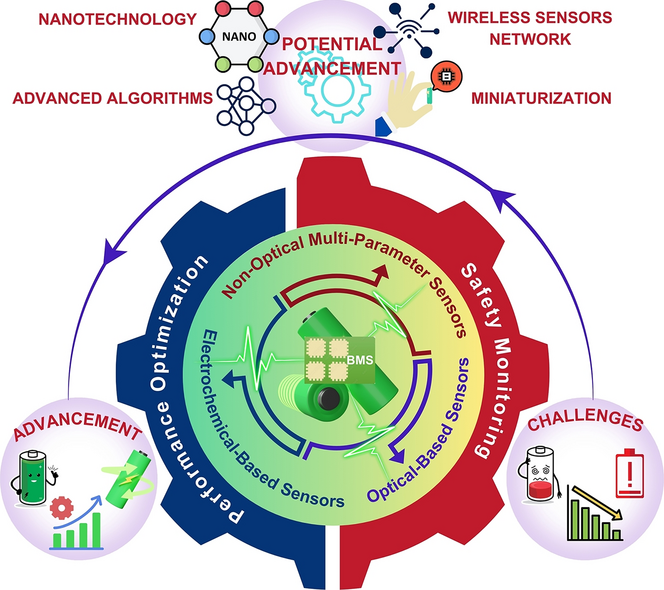Sensors Innovations for Smart Lithium-Based Batteries: Advancements, Opportunities, and Potential Challenges

Lithium-ion batteries (LiBs) are the beating heart of the electric vehicle (EV) revolution, renewable energy storage, and portable electronics. Yet, their safety risks—thermal runaway, gas venting, catastrophic failure—remain a critical bottleneck. Now, a comprehensive review led by Shu Zhang (Nanjing Forestry University) , published in Nano-Micro Letters, unveils how advanced sensor technologies are transforming LiBs into smart, self-aware energy systems.
Why Smart Sensors Matter
- Real-time Safety Monitoring: From temperature spikes to gas leaks, sensors act as an early warning system, preventing thermal runaway before it starts.
- Performance Optimization: By tracking state-of-charge (SoC) and state-of-health (SoH), sensors enable precise battery management, extending lifespan and efficiency.
- In-situ Diagnostics: Embedded sensors reveal hidden degradation mechanisms—like lithium plating or electrolyte breakdown—without dismantling the battery.
Cutting-edge Sensor Strategies
- Fiber Bragg Grating (FBG) Sensors: These hair-thin optical fibers detect micro-strain and temperature changes inside cells, offering sub-millimeter precision without electromagnetic interference.
- Gas Sensors for Thermal Runaway: Chemiresistive and amperometric sensors detect H2, CO2, and volatile organic compounds (VOCs) at ppm levels, providing ~600 seconds of early warning before fire/explosion events.
- MEMS-Integrated Microsensors: Miniaturized temperature-pressure sensors embedded in 18650 cells monitor jelly-roll expansion, correlating mechanical stress with capacity fade.
Detection & AI Integration
- Ultrasonic & Acoustic Emission: Detect electrode cracking and gas formation via sound waves, achieving <5% error in SoH prediction.
- Machine Learning Fusion: Random forest and LSTM models analyze multi-sensor data (voltage, strain, gas) to predict remaining useful life (RUL) with <2% MAPE.
- Blockchain-Enabled IoT: Wireless sensor networks (WSNs) paired with blockchain secure real-time battery data for EV fleets and grid storage.
Future Outlook
- Self-healing Sensors: Dynamic polymer nanocomposites recover from mechanical damage, ensuring 90% conductivity after thermal cycling.
- Sustainability: Recyclable nanocellulose-based sensors reduce environmental impact, aligning with EU battery regulations (2027).
- AI-BMS Synergy: Physics-informed neural networks (PINNs) will couple sensor data with electrochemical models for zero-latency fault detection.
Smart sensors are redefining lithium-ion batteries from passive energy stores to intelligent, self-protecting systems. Stay tuned for breakthroughs from the Jiangsu-Nankai sensor consortium!
Follow the Topic
-
Nano-Micro Letters

Nano-Micro Letters is a peer-reviewed, international, interdisciplinary and open-access journal that focus on science, experiments, engineering, technologies and applications of nano- or microscale structure and system in physics, chemistry, biology, material science, and pharmacy.






Please sign in or register for FREE
If you are a registered user on Research Communities by Springer Nature, please sign in